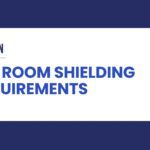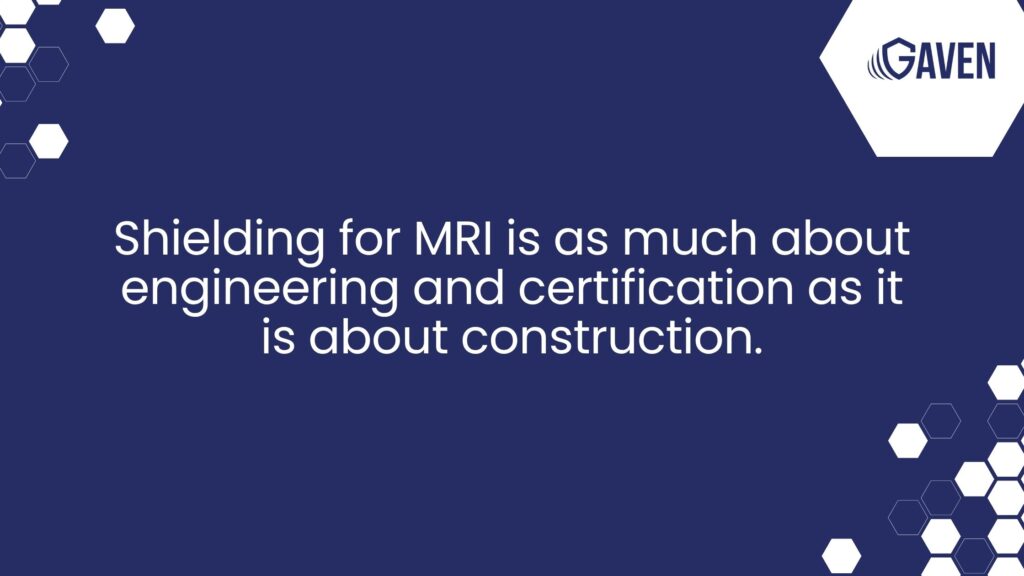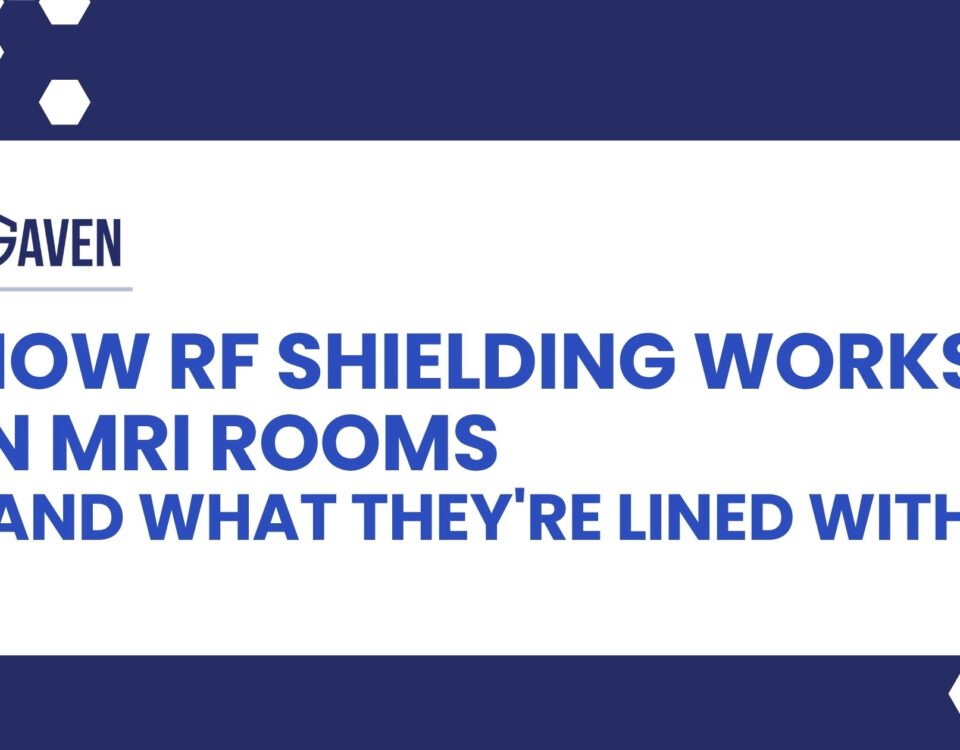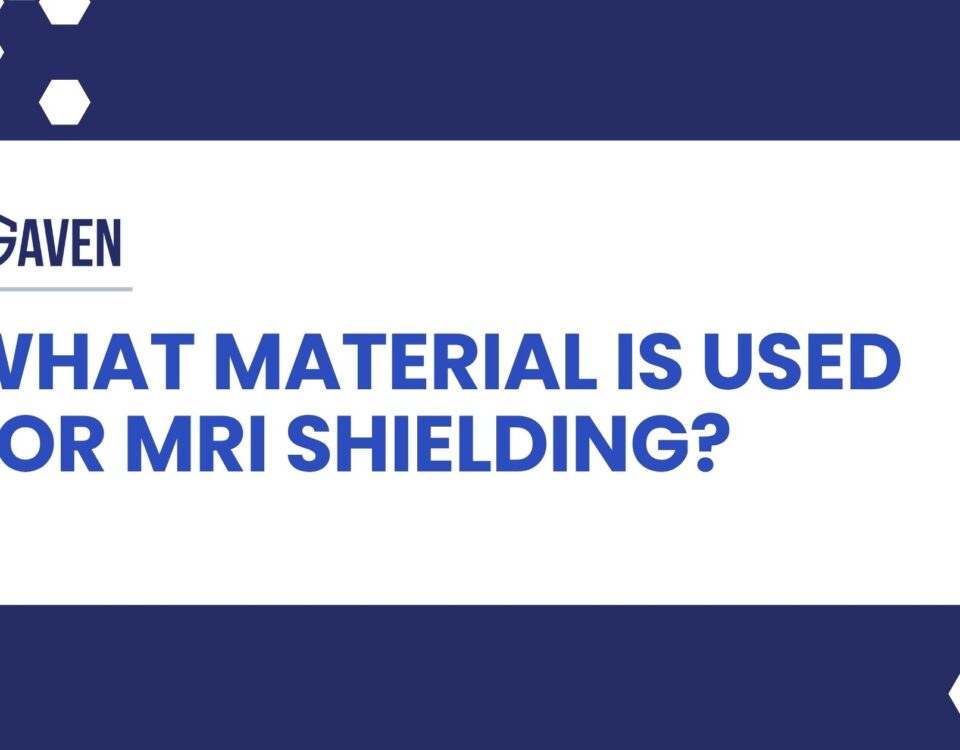


MRI Room Shielding Requirements
July 8, 2025


What type of shielding is used in MRI?
July 8, 2025Choosing the right MRI shielding company is more than a procurement decision—it’s a safety-critical partnership. From image fidelity to patient protection and regulatory compliance, shielding affects every functional aspect of MRI suite performance. The wrong vendor can introduce risk, delay construction timelines, or leave facilities vulnerable to electromagnetic interference (EMI) failures that require costly rework.
Shielding failures don’t just cause technical issues—they can lead to regulatory citations, scanner downtime, and patient risk. That’s why shielding decisions should be made early in the project, in close coordination with OEMs, facility engineers, and clinical stakeholders.
Gaven Industries is one of the few MRI shielding companies in the U.S. offering end-to-end, lifetime-guaranteed shielding solutions for RF, magnetic, and acoustic environments. With decades of experience in clinical and research imaging facilities, we understand how to engineer shielding systems that don’t just meet code—they enable optimal diagnostic performance, patient safety, and long-term durability.
In this guide, we’ll break down what MRI shielding companies do, how they differ from general RF shielding providers, and what to look for when selecting a partner for your next installation or retrofit.
Is magnetic shielding the same as RF shielding?
Although both are essential in MRI environments, magnetic shielding and RF shielding serve completely different functions, use different materials, and are installed using different strategies.
- Magnetic shielding is designed to contain the static magnetic field generated by the MRI scanner—particularly the fringe fields that extend beyond the scanner bore. Left uncontained, these fields can interfere with nearby medical equipment, violate ANSI safety zones, or create projectile risks in surrounding areas. Shielding materials like silicon steel, electrical steel, or mu-metal are applied to walls, ceilings, and floors to absorb and redirect magnetic flux, maintaining compliance with the 5 Gauss line.
- RF shielding, on the other hand, is focused on radiofrequency interference (RFI)—both preventing external EMI from corrupting MRI image data and containing the scanner’s own RF emissions. This is achieved by constructing a Faraday cage: a sealed, electrically continuous room made from highly conductive materials such as soldered copper or galvanized steel panels.
While both are mandatory, they address different threats:
- Magnetic shielding controls field spread and safety compliance
- RF shielding ensures image clarity and scan reliability
Together, these systems enable safe, compliant, and diagnostically accurate imaging. Experienced MRI shielding companies like Gaven integrate both types into a cohesive room system—designed, installed, and field-tested to clinical performance standards.
What is a metallic shielding in an MRI room called?
The term for the metallic shielding enclosure in an MRI room is a Faraday cage. This structure is designed to block radiofrequency (RF) interference by surrounding the scanner in a fully enclosed, electrically continuous barrier.
A properly designed Faraday cage is not simply “metal in the walls.” It’s a precision-engineered system built to medical-grade tolerances. The quality of the materials and the accuracy of the installation directly affect the shielding effectiveness, which is typically measured in decibels (dB) of attenuation across a frequency range of 10 kHz to 100 MHz.
Faraday cages used in MRI construction are engineered using:
- Soldered copper panels – Preferred for high-performance medical imaging due to superior conductivity, solderable seams, and excellent corrosion resistance
- Galvanized steel systems – Used in hybrid installations where structural strength or cost-efficiency is a priority
- Aluminum – Occasionally used in non-clinical or mobile settings, but less common due to corrosion potential and lower RF attenuation performance
The cage is integrated into the room’s walls, ceilings, and floors, and extends to every physical interface, including:
- RF-shielded doors and custom air seal assemblies
- Waveguide air ducts, which allow airflow without RF leakage
- Filtered penetrations for power, data, lighting, and medical gases
- Shielded windows, where line-of-sight or observation is needed
Every seam, fastener, and junction must be electrically bonded to preserve continuity and maintain performance over time. Top MRI shielding companies like Gaven Industries fabricate and install these systems in-house, ensuring tight quality control and end-to-end performance accountability.
What services are offered by RF shielding companies?
RF shielding companies that specialize in MRI environments provide far more than just panels and fasteners. The best partners operate as full-service consultants and builders, offering expertise across all stages of the shielding lifecycle.
Comprehensive services from MRI-focused shielding providers should include:
- Site assessment and compliance planning, including ACR zoning, magnet fringe modeling, and room layout coordination
- A complete understanding of job scopes during bidding, so bids fit in with the rest of the requirements of the construction or renovation job
- Custom shielding design and CAD modeling, tailored to magnet type (1.5T, 3T, or higher), facility architecture, and shielding objectives
- Fabrication of shield systems, including RF panel systems, passive magnetic shielding, and proprietary door/window assemblies
- Installation by trained technical crews, with clinical construction experience and adherence to infection control standards
- Performance testing, including RF attenuation tests (IEEE-299), magnetic field containment mapping, and certification documentation
- Post-installation services, such as annual field testing, shielding maintenance, door recalibration, and emergency repairs
Companies that offer this level of service—like Gaven Industries—are more accurately described as RF shielding consultants than vendors. Their role is strategic: guiding compliance, preserving clinical integrity, and ensuring the room meets OEM and accreditation requirements from day one.
“In MRI shielding, precision matters. You don’t just want a builder—you need a specialist who understands how shielding impacts every scan, every system, and every standard. We know from experience, with over 50 years spent helping hospitals maintain both Gaven-built rooms and also obsolete rooms.” — John J. Gaviglia, Founder, Gaven Industries
How is shielding an MRI room different from other kinds of RF shielding?
Not all shielding is created equal. MRI shielding is more complex, more regulated, and more critical than shielding for telecommunications, defense systems, or R&D labs. While all RF shielding serves to block electromagnetic interference, only MRI shielding is required to manage the dual challenge of static magnetic fields and high-frequency RF pulses in patient-occupied spaces.
Here’s why:
- MRI rooms involve both static magnetic and high-frequency RF fields—a combination not present in most commercial shielding applications. RF interference degrades image quality, while stray magnetic fields create safety hazards and zoning violations.
- The imaging process is highly sensitive to RF noise, often requiring shielding performance of 100 dB or greater across broad frequency ranges (10 kHz to 100 MHz and above).
- Patients and clinical staff are exposed to the field, meaning shielding must meet life-safety standards, not just protect equipment.
- Healthcare facilities are subject to strict compliance requirements, including ACR safety zoning, NFPA 99, FDA electromagnetic compatibility regulations, and local construction codes.
Because of these variables, shielding for MRI is as much about engineering and certification as it is about construction. General RF shielding contractors may not understand these nuances. Experienced MRI shielding companies in the USA know how to design, build, and certify enclosures to clinical standards—while coordinating with hospital planners, OEMs, and accreditation bodies to avoid post-install issues.

What should I look for in an MRI room shielding company?
When evaluating MRI shielding providers, look for qualifications that go far beyond basic installation capabilities or lowest-cost quotes. The performance, safety, and long-term compliance of your imaging suite will depend heavily on the quality and precision of the shielding implementation.
The most important selection criteria include:
- Clinical experience – A proven track record building MRI suites for hospitals, surgical centers, research institutes, and imaging clinics. Vendor familiarity with site-specific demands and clinical workflows is a must.
- Compliance familiarity – Demonstrated knowledge of ACR Guidelines, NFPA 99, FDA device regulations, and ANSI/IEEE shielding standards for attenuation and magnetic field control.
- Certifications – The company should incorporate test standards like IEEE-299 (for RF shielding effectiveness) and MIL-STD-285 into its QA process.
- Integrated capabilities – In-house design, fabrication, installation, and testing reduce handoffs, minimize risk, and ensure consistent accountability.
- Post-installation support – Shielding doesn’t end with installation. Doors must be recalibrated, fields must be tested periodically, and diagnostic equipment must be verified against real-world EMI. Ongoing support and service are essential.
When evaluating the top MRI shielding companies or searching for MRI shielding companies near me, prioritize providers that demonstrate vertical integration, third-party test documentation, and healthcare-specific project portfolios.
“MRI shielding is where construction and compliance intersect. If your partner doesn’t understand both, you’re taking a risk.” — John J. Gaviglia
Is it necessary to buy MRI shielding from a specialized company?
Yes—MRI shielding is a specialized discipline, and it requires knowledge and certifications that extend beyond the capabilities of general contractors or even most RF shielding firms. Electrical engineers, builders, or vendors who primarily work in datacenters or telecom environments often underestimate the precision and regulatory demands of healthcare shielding.
Risks of using a non-specialist include:
- Non-compliance with ACR/NFPA/FDA standards, leading to delays during inspection or failed OEM commissioning
- Ineffective shielding that requires costly rework or retrofit—especially with improperly sealed penetrations or low-grade materials
- Increased risk of safety incidents, such as projectile hazards or image distortion due to field leakage
- OEM installation delays, caused by fringe field encroachment or EMI levels outside scanner tolerances
Specialized providers like Gaven Industries bring more than materials—we bring deep domain knowledge, hundreds of successful installations, and a performance guarantee backed by in-house testing and field validation. We don’t rely on assumptions—we rely on measurement.
If you’re compiling a list of MRI shielding companies or evaluating a list of MRI shielding companies near me, make sure you’re not just collecting vendor names. You’re looking for a strategic partner—a company that will guide your project from early planning through post-installation testing and lifetime performance assurance.
“Shielding isn’t a commodity—it’s a clinical system. And systems have to be engineered, not just installed.” — John J. Gaviglia, Founder, Gaven Industries
Ready to work with one of the top MRI shielding companies? Contact Gaven Industries for expert consultation, custom solutions, and fully compliant MRI room shielding installations. We don’t just check boxes—we engineer safety, performance, and peace of mind into every build.




